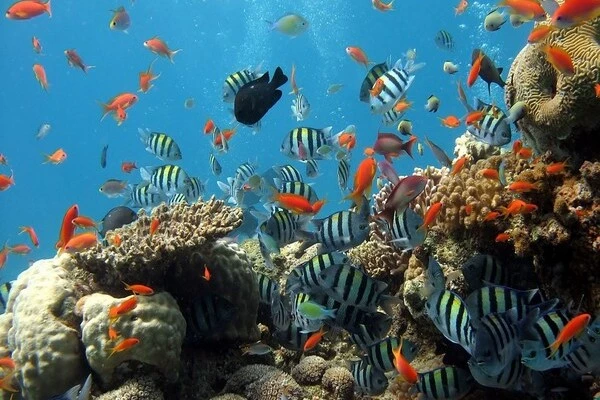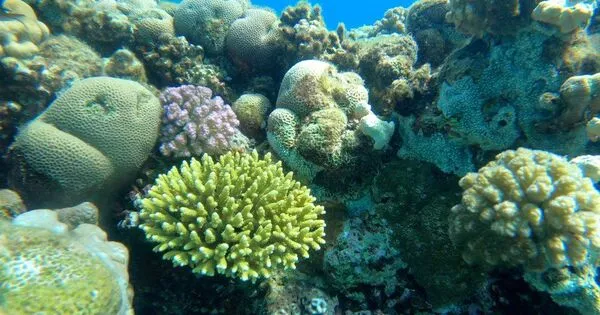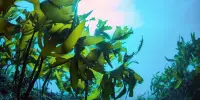Coral reefs are dependent on sunlight for survival, as it provides the energy source for photosynthetic algae called zooxanthellae that live within the coral tissue. These algae produce nutrients that support the coral’s growth and help it withstand stress from environmental factors such as high temperatures, ocean acidification, and pollutants.
However, coral reefs are often located in shallow waters where they are exposed to increased levels of shade from overhanging vegetation and land development. This reduction in sunlight can cause coral stress, leading to coral bleaching, disease, and death. Better access to sunlight could help improve the health of coral reefs and support their recovery, especially in areas that have been affected by environmental stressors.
According to new Penn State research, what happens above the surface is just as important as what happens below it when it comes to preserving the world’s coral reefs. The study, which was recently published in the journal Scientific Reports, examined productivity and biodiversity in the world’s symbiotic coral communities and discovered that maintaining water optical quality in coral reefs is critical to protecting coral biodiversity and preventing reef degradation.
“Coral reefs are one of the most biodiverse ecosystems on the planet,” said Tomás López-Londoo, a postdoctoral scholar at Penn State and the study’s lead author. “We investigated the role of sunlight in the symbiotic relationship between coral and the algae that provide oxygen for its survival to gain a better understanding of that diversity. We discovered that the intensity of underwater light has a significant impact on the energy expended by the coral’s symbiotic algae to maintain photosynthetic activity.”
He explained that the findings, while novel, are not a revelation. Science has long demonstrated that sunlight is the primary source of energy for virtually all biochemical reactions that sustain life on Earth, but the impact of sunlight on coral had not yet been fully understood, he said.
The model is very elegant in that it takes into consideration only two things. It looks at productivity, the potential that an alga has to extract energy from the sun, and the cost of living, the cost of the repair of the photosynthetic machinery.
Roberto Iglesias-Prieto
“What’s new here is we developed a model that provides a mechanistic explanation for the biodiversity patterns in coral,” said López-Londoño. “Central to that explanation is water clarity, meaning that preserving the underwater light climate should be a priority for coral reef conservation. It’s as vital as pollution mitigation, limiting ocean acidification, and reducing thermal stress.”
The researchers studied coral grown in an aquarium while simulating depth and sunlight gradations to develop a mathematical model that describes the relationship between depth-dependent variation in photosynthetic energy to corals and gradients of species diversity.
They then tested the model on previously published data, comparing reefs with varying water clarity and biodiversity patterns in marine biodiversity hotspots around the world. The team’s productivity-biodiversity model explained between 64% and 95% of the depth-related variation in coral species richness, indicating that changes in exposure to sunlight drive much of the variation in species richness with depth.

“The model is very elegant in that it takes into consideration only two things,” said Roberto Iglesias-Prieto, Penn State professor of biology and co-author on the study. “It looks at productivity, the potential that an alga has to extract energy from the sun, and the cost of living, the cost of the repair of the photosynthetic machinery. It’s a very simple notion and we found it explains the existing empirical data.”
When the researchers ran their model against global data sets, they discovered that variation in sunlight-supported algal energy supply is important in the spatial variation of species diversity within coral communities. The findings indicate that highly productive submarine environments with plenty of sunlight are an important safeguard against the risk of species extinction due to demographic and environmental changes.
The findings suggest a new strategy for reef conservation: maintaining water clarity. The researchers discovered that “maintaining water optical quality in coral reefs is critical to protecting coral biodiversity and preventing reef degradation.”
“We have a tendency to react reflexively to large-scale threats like ocean acidification and thermal stress caused by climate change,” Iglesias-Prieto said. “We say, ‘This is a serious problem, but what can I do locally?’ When it comes to reducing optical pollution, the answer is ‘everything.'”
He explained that communities can protect the clarity of their local seawater by reducing the sedimentation and pollution caused by human development and that anyone can help. “Unlike many of the environmental threats to corals, this is something that can and should be managed locally,” Iglesias-Prieto said.















